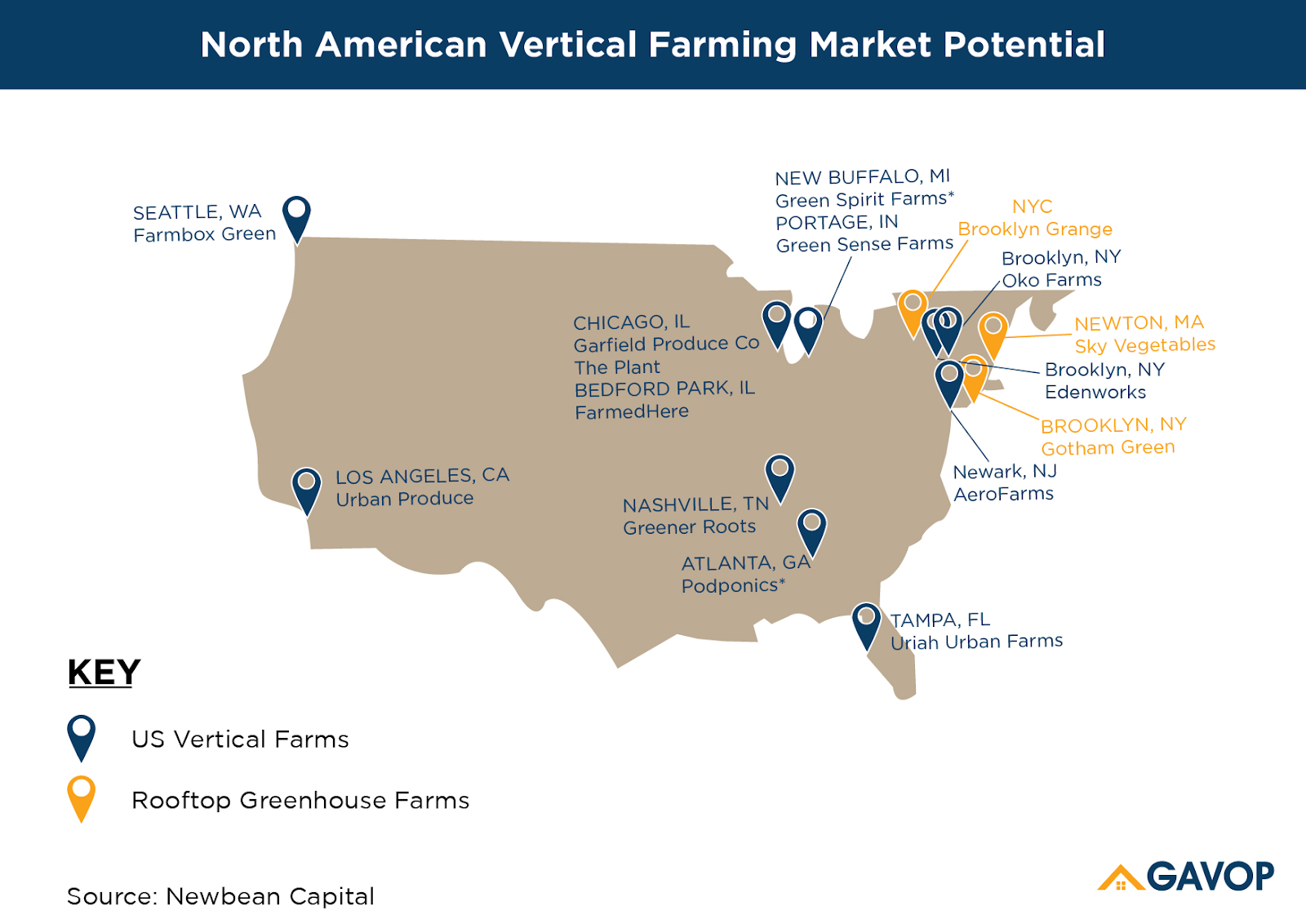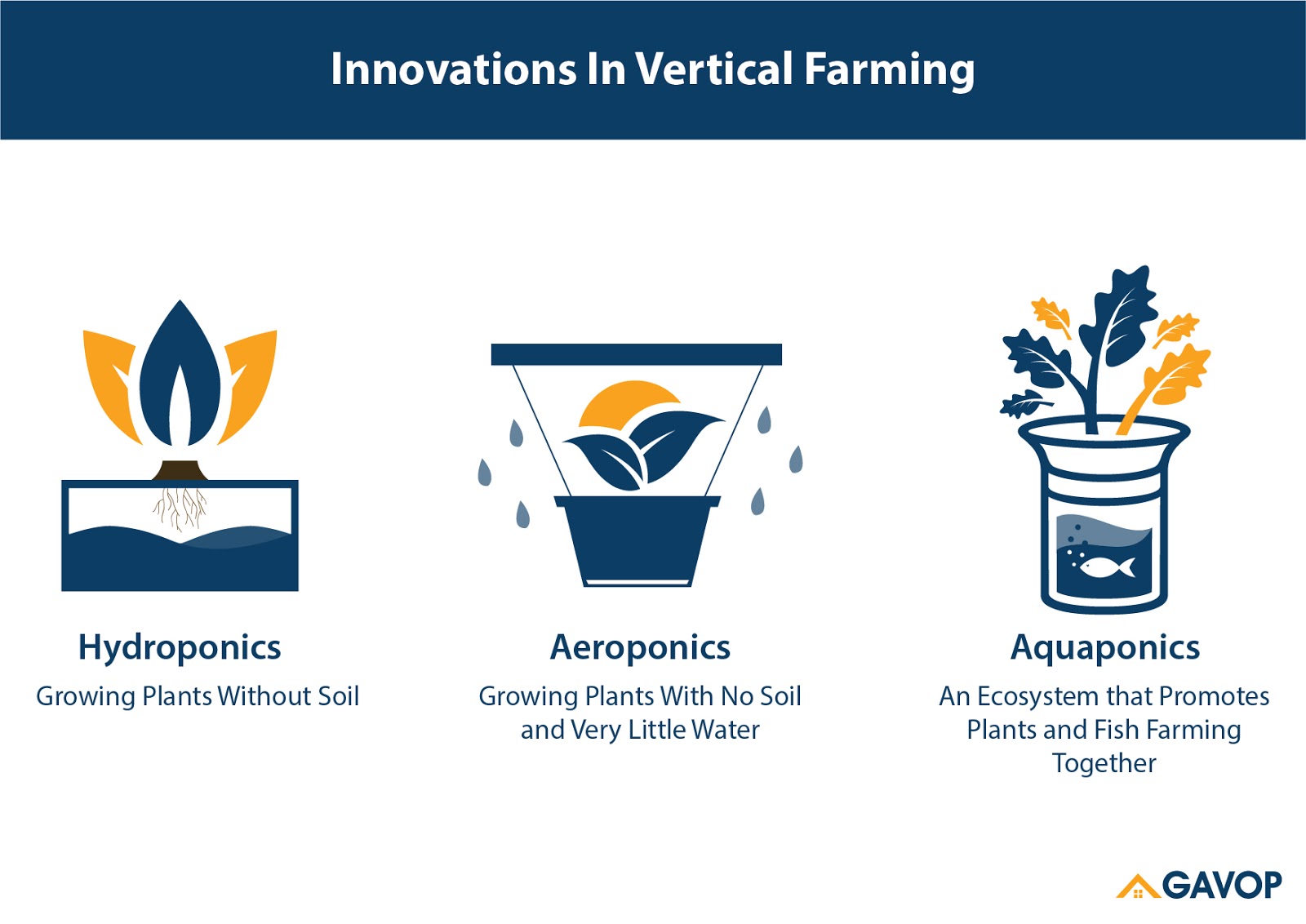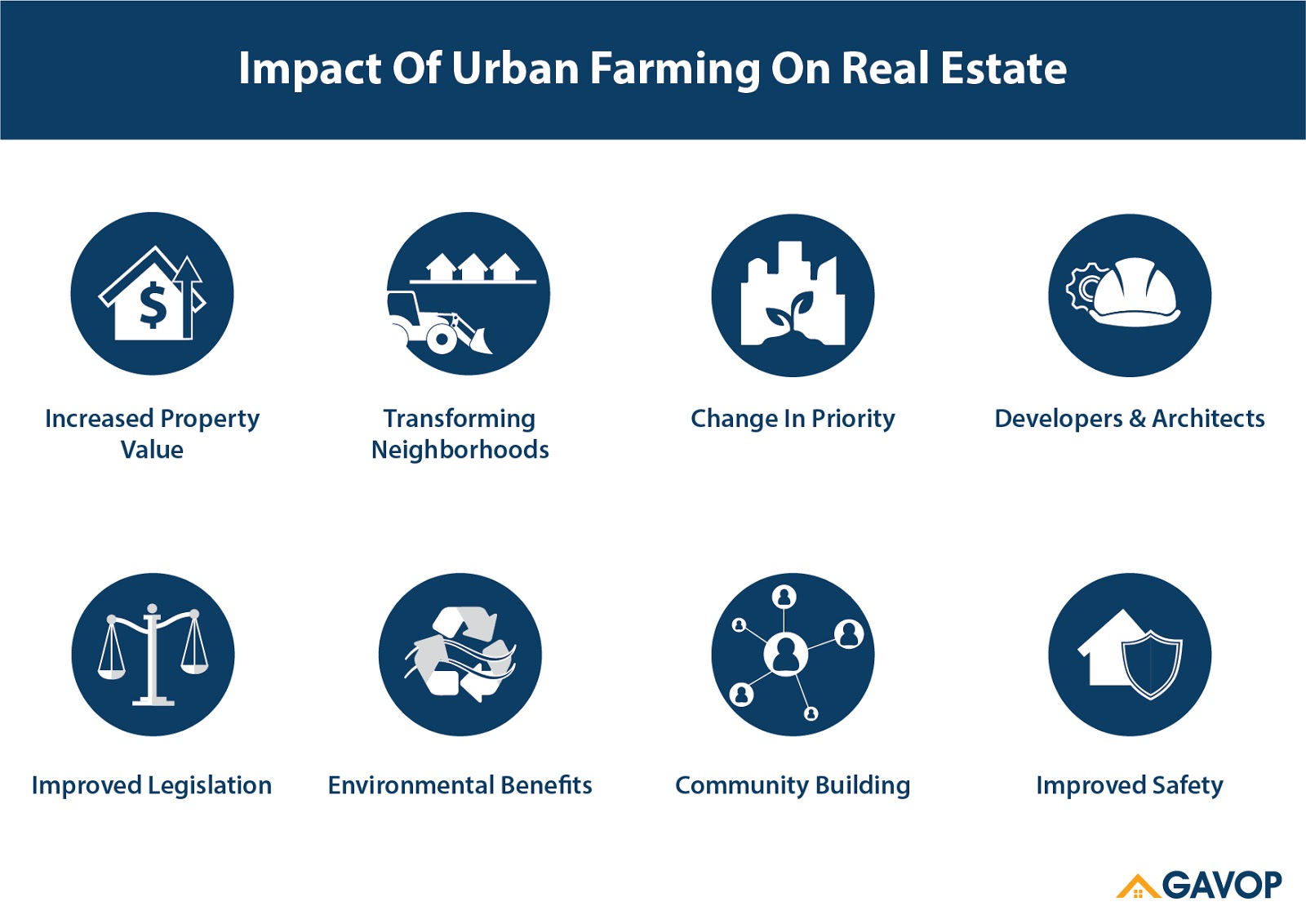Vertical Farming In Urban Areas Are Adding Value To Real Estate
Rising population coupled with demand for locally-sourced and sustainably-grown produce, and scarcity of arable land, are some of the key reasons why urban agriculture is here to stay. The opportunity to grow crops on rooftops and defunct warehouses allow for both, efficient use of the limited space found in cities and as well as an investment opportunity. This offers new use for industrial and warehouse real estate.
Urban Farming Innovations Are Revitalizing Cities
Urban agriculture describes operations ranging from community gardens to commercial production on a larger scale. Technological innovations such as indoor vertical farms and hydroponics have enabled urban farmers to expand their operations and growing seasons and offer innovative products. According to Market Research Engine, globally, vertical farming is expected to cross $6 billion by 2024. Farming within controlled environments means that food producers no longer need arable soil, perfect weather or even sunlight. Modern agriculture has made it possible to grow crops without the fear of frost or seasonal dependencies. While there are many urban farming designs and technologies in play, Gavop looks at some of the more notable ones.
Raised Beds: Refers to plots of land where the soil is separated from the ground. Some of the advantages of this form of farming are they help seeds germinate faster and transplants grow stronger with fewer problems and the soil warms up faster and drains better.
Rooftop farms: New York City alone has over 14,000 acres in prime rooftop real estate, it’s no surprise rooftop farms are sprouting up all over the US. Chicago, has 509 roofs which are now partially or fully covered with vegetation. Brooklyn Grange operates a farm of 108,000 square feet, on two rooftops in New York City, making it one of the largest urban rooftop farms in the country.

Vertical Farming: As summarized by Vitalyst, in vertical farming plants are grown in controlled indoor environments such as warehouses, shipping containers, even spare rooms in homes, using precision systems that control lighting, nutrients, and temperatures. There are several different process and innovations within it.
- Hydroponics- the method of growing plants without soil using water solvent. New York’s Gotham Green, the first company to design a commercial hydroponic urban farm in the country, and Square Roots use hydroponics.
- Aeroponics- the process of growing plants in an air or mist environment, originally designed by NASA. Newark’s AeroFarms uses aeroponics.
- Aquaponics- an aquaponic system contains a soil-free plant bed suspended over a body of water containing nutrients necessary for plant growth. Brooklyn’s Edenworks and Oko Farms use aquaponics.

Repurposing Defunct & Vacant Properties
In the United States, cities such as New York, Chicago, Milwaukee, and others are becoming pioneers of urban agriculture by repurposing vacant warehouses, derelict buildings and high-rises to grow food. These facilities come under Controlled Environment Agriculture (CEA), and a real estate professional is more likely to identify building systems that will accommodate the unique needs of vertical farming. While not all metros having a thriving market for this, what seem to drive this technology is population density, consumer lifestyles, and lack of local supplies. A study done by the John Hopkins Center For a Livable Future found that urban agriculture has been embraced by many cities as a means through which to repurpose vacant lots. This, in turn, has led to an increase in property values and, consequently, capital investment and redevelopment in distressed areas; and add jobs to the local economy. Places like New York and Chicago have sizable stocks of vacant older properties that could be repurposed into vertical farming. This has happened in projects such as The Pant in Chicago, IL and AeroFarms in Newark, NJ.
While central cities are ideal locations for urban farming given their proximity to dense population and major retail outlets, the issue of affordability is salient in some of these cities because of very expensive real estate. The Northeast is providing a lucrative market because of its distance from, California and Arizona, places where produce is commonly grown and has aged by the time it reaches the East Coast, as well as, the availability of sizable stocks of vacant older properties that could be repurposed into vertical farming. Vacant lots, which account for roughly 16.7 percent of large US cities’ land area, have long been neglected and put aside. New York City has 235 skyscrapers and around one billion square feet of roof area. Amounting to over 11 percent of the total area of the city. Quite a few real estate developers and companies are hoping to revitalize rooftops and similar underutilized areas in cities. Urban agriculture is responsible for a significant portion of the much-needed urban redevelopment of Detroit.
Impact Of Urban Farming On Real Estate
The Urban Agricultural Committee of the national Community Food Security Coalition defines urban agriculture, which includes but is not limited to community gardening, like the growing, processing, and distributing of food and other products through intensive plant cultivation and animal husbandry in and around cities.

Increased Property Value:
A study in The Bronx, New York City, NY found that within five years of opening a small community garden, property values increased by 9.4% in the nearest surrounding neighborhoods (Voicu & Been 2008). The closer the neighboring property is to the community garden the greater the benefit. Community gardens bring “significantly larger benefits” in lower-income neighborhoods.
Transforming neighborhoods: According to a recent report from PricewaterhouseCoopers and the Urban Land Institute, more vacant parcels and derelict buildings across the country are returning to productive use as urban farms and other food-related enterprises. In the Ironbound neighborhood of Newark, AeroFarms, a 69,000-square- foot former steel factory is being converted into the world’s largest indoor vertical farm. The $30 million investment has attracted institutional capital as well as public dollars from the city of Newark and the state of New Jersey. The Ironbound is in position to revamp Newark the way revitalized neighborhoods have done just across the harbor in Brooklyn.
Change in priority: In a December 2018 study, the Urban Land Institute (ULI) noted that 73% of U.S. residents say access to fresh and healthy food is a top priority when deciding where to live. The study also noted that farming lands are often less expensive to maintain than other development-connected amenities such as a golf course.
Developers & Architects: As both urban agriculture and real estate boom in a number of U.S. cities, real estate developers are looking to small-scale local growers to augment their plans. The inclusion of a farm is seen as an asset that makes the community more sellable. As a perk for tenants like Google and Akamai, commercial property management company Boston Properties asked Green City Growers to initiate a garden and education program at its Kendall Center building in Cambridge.
Improved legislation: Recent legislation has also addressed property appraisals and taxes in some of these cities. In Kansas, according to SB 280 (2015), amends property tax law including appraisal for “land devoted to agricultural use.” California, for example, passed its Urban Agriculture Incentive Zones Act in 2014, allowing landowners who place urban plots into agricultural use to score valuable tax breaks. Although the legislation varies from place to place, there are many communities stepping forward to embrace urban agriculture.
Environmental benefits: Urban agriculture can also improve air quality and reduce the ‘heat island’ microclimate condition common to urban areas.
Community building: Perhaps the most mentioned benefit is that it brings a sense of community to the neighborhood. Access to agriculture is now an important part of community planning.
Improved safety: Community gardens have a well-documented ability to improve the safety of communities. They create defensible space; their existence minimizes vacant escape routes for criminal perpetrators.